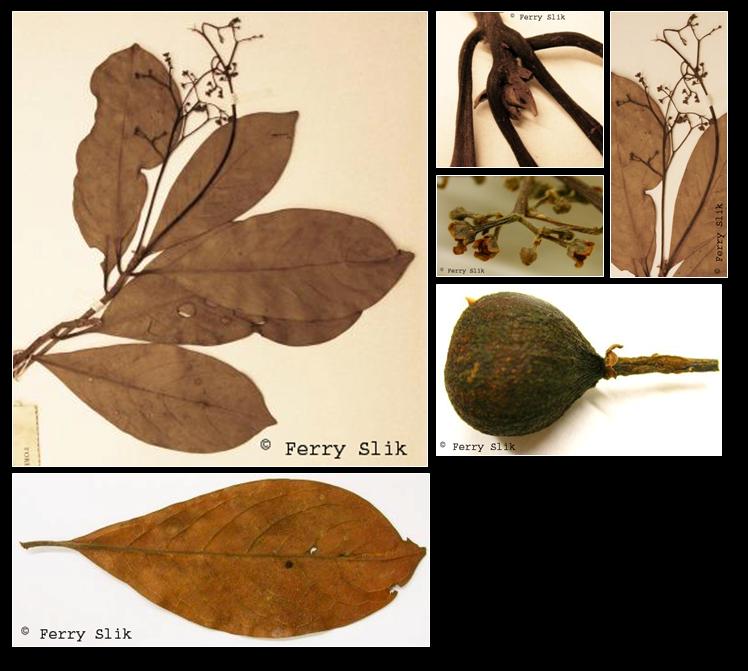Alseodaphne bancana Miq., Fl. Ind. Bat. 1 (1858)
Latin for 'from Bangka', and island between Sumatra and Borneo.Synonyms
Alseodaphne decipiens Hook.f.
Note
Almost indistinguishable from Dehaasia firma Blume.
Description
Mid-canopy tree up to 40 m tall and 66 cm dbh. Stipules absent. Leaves
alternate, simple, penni-veined, glabrous to very short hairy below. Flowers ca.
3.5 mm diameter, yellow-white, placed in panicles. Fruits ca. 13 mm diameter,
blue-purple, fleshy drupe with pink-reddish fruit stalk.
Ecology
In undisturbed mixed dipterocarp, swamp, keranga and sub-montane forests up
to 1100 m altitude. Usually on hillsides and ridges, but also in or near swamps
and along rivers. Usually on rich clay soils, but also on poor sandy soils. In
secondary forests usually present as a pre-disturbance remnant tree.
Uses
The wood is used for construction purposes and to make boats.
Distribution
Peninsular Malaysia, Sumatra, Borneo (Sarawak, Brunei, Sabah, Central- and
East-Kalimantan).
Local names
Borneo: Medang, Medang hatu, Medang sisek, Medang sisik.
